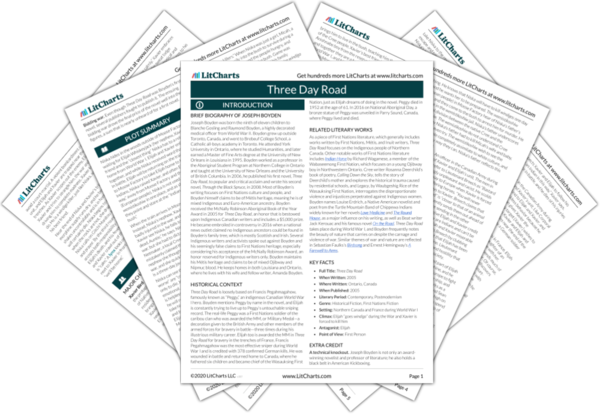“After the death of my , your grandfather, ,” says, “our people were directionless.” Many went to Moose Factory and “learned to stomach the food and ways,” but a small group decided “to go into the bush instead.” There, showed Niska “the magic deep in that bush that is as real, as alive as the flashing glow of the .” But the Hudson’s Bay Company
“instilled in the a greed for furs that nearly wiped out the animals,” and the land could no longer sustain them. They were forced to go to Moose Factory.
